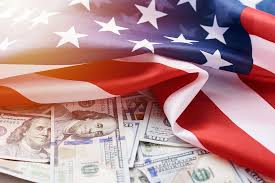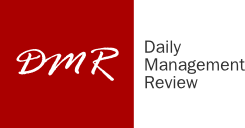
The U.S. economy has experienced a slight yet uneven uptick in activity since mid-January, accompanied by modest employment gains and price increases. This period of growth is overshadowed by rising uncertainty stemming from recent trade policies, particularly the imposition of tariffs on key trading partners such as Canada, Mexico, and China. These developments have sparked concerns about potential stagflation, business investment hesitancy, sector-specific reactions, and challenges for the Federal Reserve.
To comprehend the potential ramifications of current trade policies, it's instructive to revisit past instances where significant tariffs were imposed. The Smoot-Hawley Tariff Act of 1930 serves as a cautionary tale. Enacted during the onset of the Great Depression, this legislation raised U.S. tariffs on over 20,000 imported goods, leading to retaliatory measures from other countries. The result was a substantial reduction in international trade, which many economists believe exacerbated the economic downturn. The act's contribution to deepening the Great Depression underscores the potential risks associated with protectionist trade policies.
Stagflation Concerns
The recent tariffs have reignited fears of stagflation—a scenario characterized by stagnant economic growth coupled with rising inflation. Economists warn that the tariffs could lead to increased prices for imported goods, contributing to inflationary pressures. Simultaneously, the uncertainty and potential retaliatory measures from affected countries may dampen economic growth, creating a challenging environment reminiscent of the stagflation experienced in the 1970s.
The unpredictable nature of current trade policies is causing businesses to reassess their investment plans. Companies are grappling with uncertainty regarding costs and market access, leading some to delay or scale back investments. This hesitation can slow economic growth, as reduced capital expenditures may hinder productivity improvements and job creation. The lack of clarity surrounding trade policies is a significant headwind for business planning and economic expansion.
Sector-Specific Reactions
Different sectors are responding variably to the tariffs. Manufacturers reliant on imported materials face increased costs, which some are passing on to consumers, thereby contributing to inflation. For instance, industries such as automotive and electronics, which depend heavily on global supply chains, are experiencing cost pressures that could lead to higher consumer prices. Conversely, some domestic producers may benefit from reduced foreign competition, although these gains may be offset by higher input costs and potential retaliatory tariffs affecting exports.
The Federal Reserve finds itself in a precarious position, needing to balance the dual mandate of promoting maximum employment and stabilizing prices amid potential stagflation. The prospect of rising inflation due to tariffs may prompt considerations for tightening monetary policy. However, doing so could further suppress economic growth, especially if businesses are already hesitant to invest. Conversely, maintaining accommodative policies to support growth could risk allowing inflation to accelerate beyond desired levels. This delicate balancing act underscores the complexity of the Fed's policy decisions in the current environment.
There are emerging signs that consumers are adjusting their spending patterns in response to economic uncertainties. Reports indicate a decline in consumer spending, with individuals foregoing non-essential purchases. For example, some casual dining restaurants have observed customers skipping appetizers and desserts, suggesting a more cautious approach to discretionary spending. This behavior may reflect declining consumer confidence, which could further dampen economic growth if it leads to sustained reductions in consumption.
Drawing parallels with past economic cycles can offer valuable insights. The early 1980s recession, characterized by high inflation and unemployment, shares similarities with the current environment's potential risks. During that period, aggressive monetary tightening was employed to combat inflation, leading to a significant economic downturn. Understanding the outcomes of such policy responses in historical contexts can inform current decision-making and highlight the importance of carefully calibrated policies.
Impact on Employment Trends
The rising uncertainty over trade policies is influencing labor demand across various industries. Businesses facing increased costs and uncertain market conditions may become more cautious in hiring, potentially slowing employment growth. Industries exposed to international trade, such as manufacturing and agriculture, are particularly vulnerable. A slowdown in hiring or job losses in these sectors could have ripple effects throughout the economy, affecting overall employment trends and consumer spending.
The international response to U.S. tariffs has been swift, with affected countries implementing retaliatory measures targeting U.S. exports. For instance, China and Canada have imposed tariffs on American goods, ranging from agricultural products to manufactured items. These actions can hurt U.S. exporters, leading to reduced sales and potential job losses in export-dependent industries. The escalation of trade tensions risks creating a cycle of retaliation that could further impede global economic growth.
Long-Term Economic Outlook
Sustained trade tensions pose significant risks to the U.S. economy's long-term growth prospects and structural stability. Prolonged uncertainty can deter investment, hinder productivity gains, and disrupt established supply chains. Additionally, persistent inflationary pressures could erode purchasing power and savings. Addressing these challenges requires a nuanced approach to trade policy that considers both short-term economic impacts and long-term strategic interests. Policymakers must weigh the benefits of protectionist measures against the potential costs to economic dynamism and international competitiveness.
The slight uptick in U.S. economic activity is tempered by the complexities introduced by recent trade policies. Historical precedents highlight the risks associated with protectionist measures, including exacerbating economic downturns. The potential for stagflation, coupled with business investment hesitation and sector-specific challenges, presents a multifaceted policy dilemma. The Federal Reserve's role in navigating these turbulent waters is crucial, as is the need to monitor consumer behavior and employment trends. Understanding the global ramifications and preparing for long-term implications
(Source:www.reuters.com)
To comprehend the potential ramifications of current trade policies, it's instructive to revisit past instances where significant tariffs were imposed. The Smoot-Hawley Tariff Act of 1930 serves as a cautionary tale. Enacted during the onset of the Great Depression, this legislation raised U.S. tariffs on over 20,000 imported goods, leading to retaliatory measures from other countries. The result was a substantial reduction in international trade, which many economists believe exacerbated the economic downturn. The act's contribution to deepening the Great Depression underscores the potential risks associated with protectionist trade policies.
Stagflation Concerns
The recent tariffs have reignited fears of stagflation—a scenario characterized by stagnant economic growth coupled with rising inflation. Economists warn that the tariffs could lead to increased prices for imported goods, contributing to inflationary pressures. Simultaneously, the uncertainty and potential retaliatory measures from affected countries may dampen economic growth, creating a challenging environment reminiscent of the stagflation experienced in the 1970s.
The unpredictable nature of current trade policies is causing businesses to reassess their investment plans. Companies are grappling with uncertainty regarding costs and market access, leading some to delay or scale back investments. This hesitation can slow economic growth, as reduced capital expenditures may hinder productivity improvements and job creation. The lack of clarity surrounding trade policies is a significant headwind for business planning and economic expansion.
Sector-Specific Reactions
Different sectors are responding variably to the tariffs. Manufacturers reliant on imported materials face increased costs, which some are passing on to consumers, thereby contributing to inflation. For instance, industries such as automotive and electronics, which depend heavily on global supply chains, are experiencing cost pressures that could lead to higher consumer prices. Conversely, some domestic producers may benefit from reduced foreign competition, although these gains may be offset by higher input costs and potential retaliatory tariffs affecting exports.
The Federal Reserve finds itself in a precarious position, needing to balance the dual mandate of promoting maximum employment and stabilizing prices amid potential stagflation. The prospect of rising inflation due to tariffs may prompt considerations for tightening monetary policy. However, doing so could further suppress economic growth, especially if businesses are already hesitant to invest. Conversely, maintaining accommodative policies to support growth could risk allowing inflation to accelerate beyond desired levels. This delicate balancing act underscores the complexity of the Fed's policy decisions in the current environment.
There are emerging signs that consumers are adjusting their spending patterns in response to economic uncertainties. Reports indicate a decline in consumer spending, with individuals foregoing non-essential purchases. For example, some casual dining restaurants have observed customers skipping appetizers and desserts, suggesting a more cautious approach to discretionary spending. This behavior may reflect declining consumer confidence, which could further dampen economic growth if it leads to sustained reductions in consumption.
Drawing parallels with past economic cycles can offer valuable insights. The early 1980s recession, characterized by high inflation and unemployment, shares similarities with the current environment's potential risks. During that period, aggressive monetary tightening was employed to combat inflation, leading to a significant economic downturn. Understanding the outcomes of such policy responses in historical contexts can inform current decision-making and highlight the importance of carefully calibrated policies.
Impact on Employment Trends
The rising uncertainty over trade policies is influencing labor demand across various industries. Businesses facing increased costs and uncertain market conditions may become more cautious in hiring, potentially slowing employment growth. Industries exposed to international trade, such as manufacturing and agriculture, are particularly vulnerable. A slowdown in hiring or job losses in these sectors could have ripple effects throughout the economy, affecting overall employment trends and consumer spending.
The international response to U.S. tariffs has been swift, with affected countries implementing retaliatory measures targeting U.S. exports. For instance, China and Canada have imposed tariffs on American goods, ranging from agricultural products to manufactured items. These actions can hurt U.S. exporters, leading to reduced sales and potential job losses in export-dependent industries. The escalation of trade tensions risks creating a cycle of retaliation that could further impede global economic growth.
Long-Term Economic Outlook
Sustained trade tensions pose significant risks to the U.S. economy's long-term growth prospects and structural stability. Prolonged uncertainty can deter investment, hinder productivity gains, and disrupt established supply chains. Additionally, persistent inflationary pressures could erode purchasing power and savings. Addressing these challenges requires a nuanced approach to trade policy that considers both short-term economic impacts and long-term strategic interests. Policymakers must weigh the benefits of protectionist measures against the potential costs to economic dynamism and international competitiveness.
The slight uptick in U.S. economic activity is tempered by the complexities introduced by recent trade policies. Historical precedents highlight the risks associated with protectionist measures, including exacerbating economic downturns. The potential for stagflation, coupled with business investment hesitation and sector-specific challenges, presents a multifaceted policy dilemma. The Federal Reserve's role in navigating these turbulent waters is crucial, as is the need to monitor consumer behavior and employment trends. Understanding the global ramifications and preparing for long-term implications
(Source:www.reuters.com)





